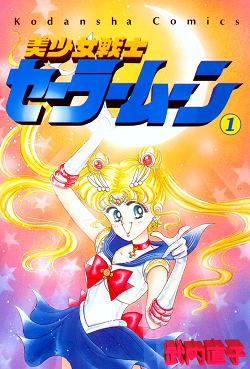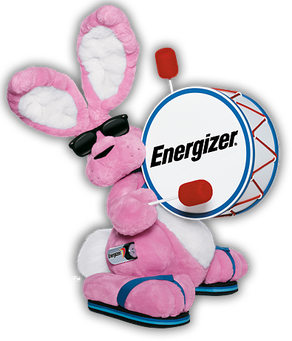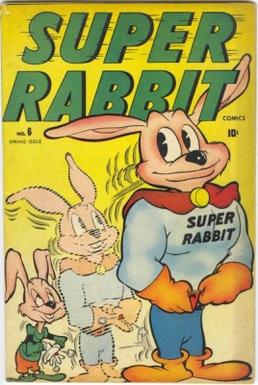Bunny is a colloquial term for a rabbit.
Contents
Bunny may also refer to:
Bunny is a colloquial term for a rabbit.
Bunny may also refer to:

Sailor Moon is a Japanese manga series written and illustrated by Naoko Takeuchi. It was originally serialized in Kodansha's shōjo manga magazine Nakayoshi from 1991 to 1997; the 60 individual chapters, along with several side stories, were compiled in 18 volumes. The series follows the adventures of a schoolgirl named Usagi Tsukino as she transforms into the eponymous character to search for a magical artifact, the "Legendary Silver Crystal". She leads a group of comrades, the Sailor Soldiers, called Sailor Guardians in later editions, as they battle against villains to prevent the theft of the Silver Crystal and the destruction of the Solar System.

Bugs Bunny is a fictional character created in the late 1930s at Warner Bros. Cartoons and voiced originally by Mel Blanc. Bugs is best known for his featured roles in the Looney Tunes and Merrie Melodies series of animated short films, produced by Warner Bros. Earlier iterations of the character first appeared in Ben Hardaway's Porky's Hare Hunt (1938) and subsequent shorts before Bugs's definitive characterization debuted in Tex Avery's A Wild Hare (1940). Bob Givens, Chuck Jones, and Robert McKimson are credited for defining Bugs's design.

Looney Tunes is an American animated franchise produced and distributed by Warner Bros. It began as a series of short films that originally ran from 1930 to 1969, along with its partner series Merrie Melodies, during the golden age of American animation. Following a revival in the late 1970s, new shorts were released as recently as 2014. The two series introduced a large cast of characters, including Bugs Bunny, Daffy Duck, and Porky Pig. The term Looney Tunes has since been expanded to also refer to the characters themselves.
Harvey, Harveys or Harvey's may refer to:

Oswald the Lucky Rabbit is an animated cartoon character created in 1927 by Walt Disney and Ub Iwerks for Universal Pictures. He starred in several animated short films released to theaters from 1927 to 1938. Twenty-seven animated Oswald shorts were produced at the Walt Disney Studio. After Universal took control of Oswald's character in 1928, Disney created a new character similar in appearance to Oswald as a replacement: Mickey Mouse, who went on to become one of the most famous cartoon characters in the world.
Bliss is a common noun meaning 'extreme happiness'. It may also refer to:

The Energizer Bunny is the mascot of Energizer batteries in North America. It is a pink mechanical toy rabbit wearing sunglasses and blue and black striped flip-flops that beats a bass drum bearing the Energizer logo.

Harvey Comics was an American comic book publisher, founded in New York City by Alfred Harvey in 1941, after buying out the small publisher Brookwood Publications. His brothers, Robert B. and Leon Harvey, joined shortly after. The company soon got into licensed characters, which, by the 1950s, became the bulk of their output. The artist Warren Kremer was closely associated with the publisher.

Little Audrey is a fictional character, appearing in early 20th century comics prior to starring in a series of Paramount Pictures' Famous Studios cartoons from 1947 to 1958. She is considered a variation of the better-known Little Lulu, devised after Paramount decided not to renew the license on the comic strip character created by Marjorie Henderson Buell. Despite some superficial similarities between the two characters, the Famous animators were at pains to design Audrey in contrast to Lulu, adopting an entirely different color scheme and employing the stylistic conventions common to Famous Studios' later 1940s repertoire, as opposed to Buell's individualistic rendering of Little Lulu. Veteran animator Bill Tytla was the designer of Little Audrey, reportedly inspired by his daughter Tammy. The original voice of Little Lulu was performed by actress Cecil Roy. Little Audrey was, instead, voiced by Mae Questel, who also voiced most of Paramount's other major female cartoon characters, including Betty Boop and Olive Oyl from the Popeye cartoons.

Easter Yeggs is a 1947 Looney Tunes theatrical animated short. The cartoon was released on June 28, 1947, and features Bugs Bunny and Elmer Fudd. The title is a play on "Easter eggs" and on "yegg", a slang term for a burglar or safecracker. The voice and characterization of the Easter Bunny in the short is a reference to a character that Mel Blanc performed on the Burns and Allen radio show, the morose Happy Postman, even including the character's catch phrase, "Remember, keep smiling."
A claw is a sharp growth at the end of a toe or finger.

Super Rabbit is a talking animal superhero in american comic books published by Timely Comics, a predecessor of Marvel Comics, during the 1930s and 1940s period fans and historians call the Golden Age of comic books. Created by cartoonist Ernie Hart, he first appeared in Comedy Comics #14.

Br'er Fox and Br'er Bear are fictional characters from African-American oral traditions popular in the Southern United States. These characters have been recorded by many different folklorists, but are most well-known from the folktales adapted and compiled by Joel Chandler Harris, featuring his character Uncle Remus.

Roger Rabbit is a fictional animated anthropomorphic rabbit. The character first appeared in author Gary K. Wolf's 1981 novel, Who Censored Roger Rabbit? In the book, Roger is second banana in a popular comic strip, "Baby Herman". Roger hires private detective Eddie Valiant to investigate why his employers, the DeGreasy Brothers, have reneged on their promise to give Roger his own strip. When Roger is found murdered in his home, Valiant sets out to look for the killer, with the help of Roger's "doppel".
Events in 1952 in animation.
The Powerpuff Girls is an American animated media franchise created by animator Craig McCracken and produced by Hanna-Barbera. The franchise originated on a cartoon short Whoopass Stew! in 1992 and centers on Blossom, Bubbles, and Buttercup, three genetically engineered little girls with superpowers. They live in the fictional city of Townsville with their father and creator, the scientist Professor Utonium, where-in they are frequently called upon by the city's mayor in order to help fight criminals and other enemies using their powers.
For many years, LGBT representation increased on animated series and animated films. In the 1990s, LGBT characters were depicted in animated series like South Park, The Ambiguously Gay Duo, and The Simpsons. In the early 2000s, LGBT representation increased in Western animation, culminating in GLAAD's "Where We Are in TV" report in 2005, even as representation in such animation was scattered and disparate. In the 2000s, series like Queer Duck, The Oblongs, The Venture Bros., Drawn Together, and Archer would air. It would not be until the advent of shows like Steven Universe, The Legend of Korra, and Adventure Time in the 2010s, that LGBT characters in animation would gain more of a prominent role, leading to shows such as She-Ra and the Princesses of Power in 2018 and Kipo and the Age of Wonderbeasts in 2020, along with other series in the 2020s. This page will show this progress by building off the lists of animated series which contain these characters and explain the History of LGBT characters in animation. It does not focus on LGBT characters in anime series or films, which is examined on the LGBT themes in anime and manga page.